8 things to collect NOW before you plant your tomatoes
Don’t get caught without the essentials to tomato-growing success at tomato-planting time! Start collecting these (six) things now to grow your best tomatoes this summer!
This post may contain (hmm, yeah, it’s gonna) affiliate links, which–if you click on them and purchase something–will give me a small commission, at no cost whatsoever to you! Thanks much, and here’s more about that if you’re interested.
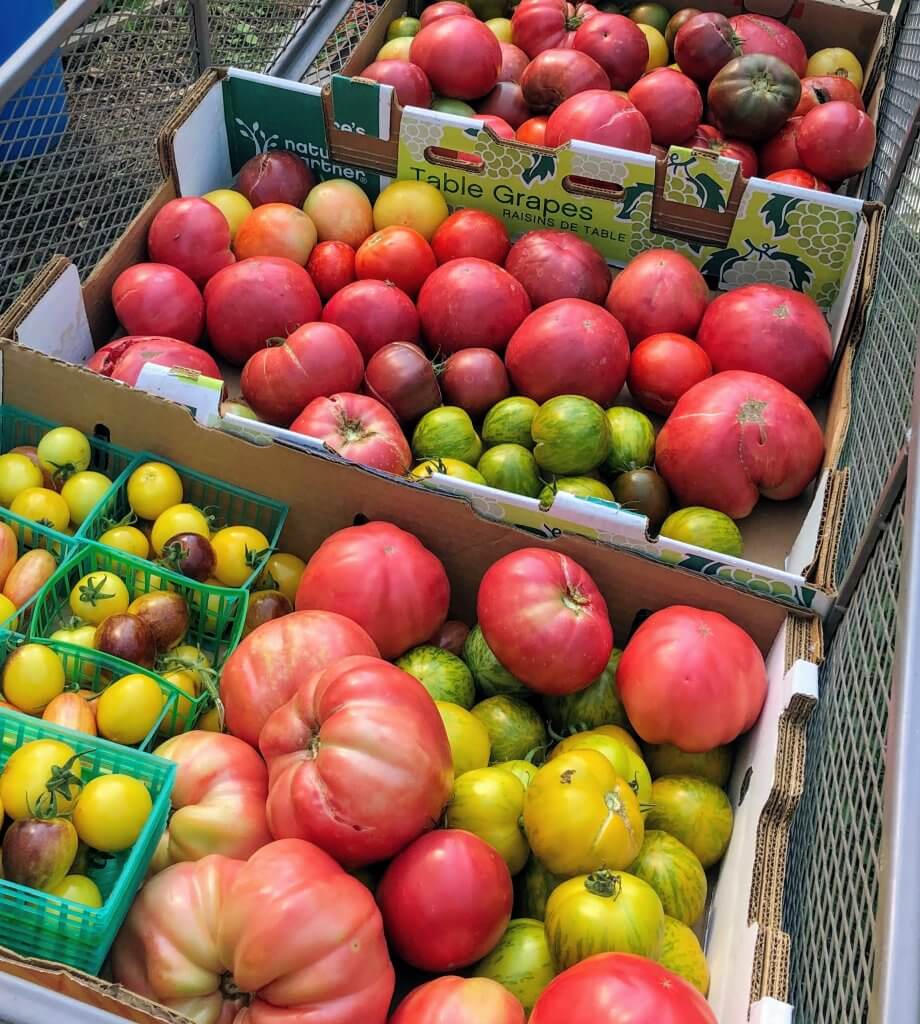
It’s early April. Here in Nebraska, in Zone 5sville, that’s way too early to plant tomatoes outside. Yes, I do have trays and trays of tomato seedlings in the basement, under lights, but it’ll be a good six weeks before I dare to plant them out. Maybe five weeks, if I’m feeling brave.
But that doesn’t stop me from savoring the idea of BLTs, Tuscan poached eggs with heirloom tomatoes (the perfect meal), or dreaming about marinated tomato salads and piles of cherry tomatoes to snack on. And as always, there are plenty of things to gather and collect so I’m ready to grow my best tomatoes yet.
That task, of course, serves to occupy one’s mind and energy until it’s time for tomato planting.
Tsk, tsk, gentle reader. What do you mean you have no idea what I’m talking about? It’s good for you that I happened along. I shall apprise you. There is absolutely no time to waste. It’s time NOW to collect 8 things to grow your very best tomatoes this summer.
Let’s get started.
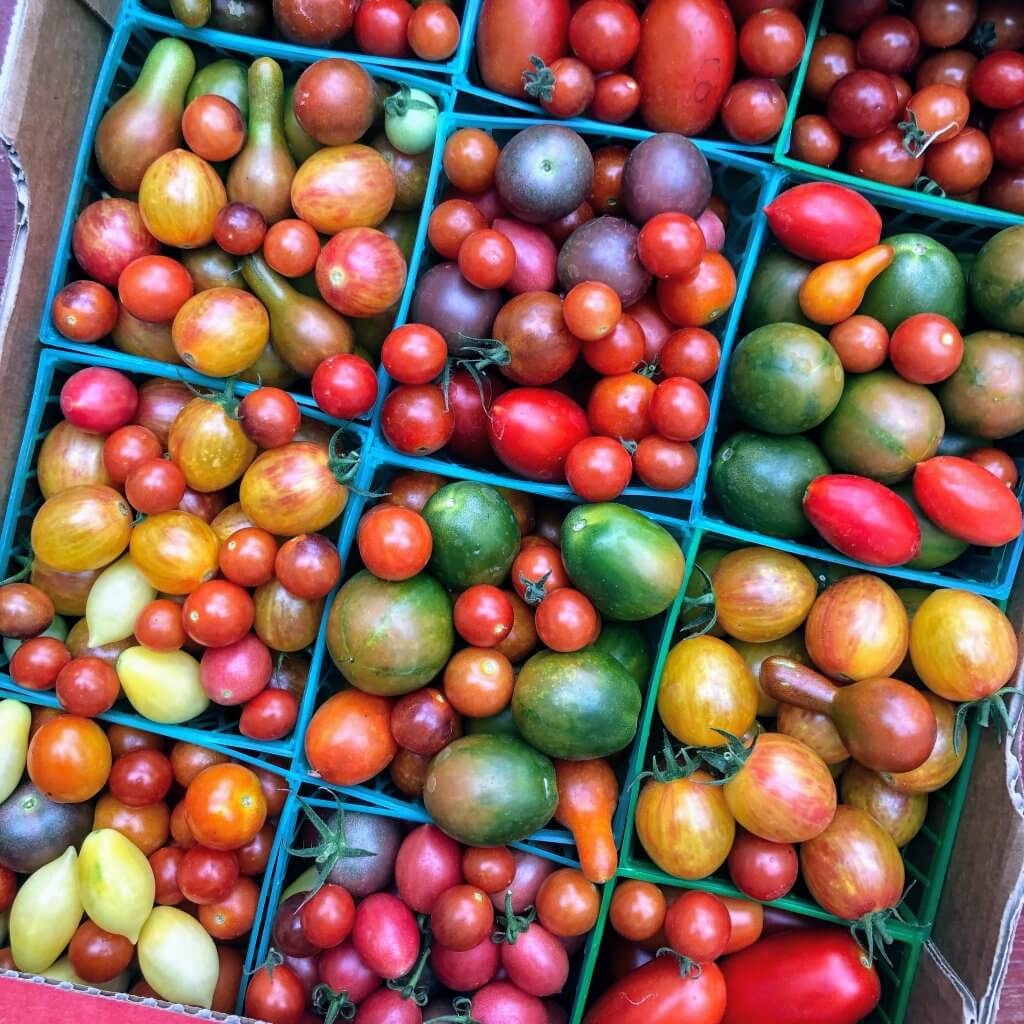
But first: I have some experience in this area.
Just one simple paragraph on this topic, as the common blogging advice is this: write about something on which you have authority, clout, your zone of genius, as it were.
(Okay, two paragraphs). If there’s one thing in the world inwhich I have authority, it’s in growing heirloom tomatoes. I’ve grown heirloom tomatoes (hybrids too, but primarily heirlooms) every summer since I got married, lo, many many many
(oh so very many)
years ago. In the early years, I grew them on our apartment balcony, in buckets full of potting soil. When we finally bought a house, I planted my backyard garden before I fixed up anything in the house, though it was an ugly, ramshackle fixer-upper, through and through.
First things first!
(Just one more). I’ve grown heirloom tomatoes for restaurants for the past several years, and I believe I’ve learned a thing or two from that experience, too.
Okay, I’m never going to start a section with “Just one simple paragraph on this topic,” as obviously it backfired on me! 🙂
Second: a disclaimer
I live in Zone 5, in Nebraska, where the wind always blows, forever and anon. We either have too much rain and we wring our hands over the spring’s flooding, or very little rain and we wring our hands over which crops we have time to water, and (hopefully) to save.
Moreover, our soil tends to be dense and clay-filled, so we’re constantly piling compost and manure and organic matter on our garden spaces, to improve our soil structure. So much of what I do when growing my tomatoes every summer is because of these weather extremes and everything else that is common in the midwest.
If your weather, gentle reader, is always mild and perfect; you have no idea of the concept of “wind” and your soil is deep, friable and loamy . . . well, God bless you. You may not need this information.
But then, you may.
Now that we’ve introduced the subject and talked (farmer-like) about our weather exhaustively, let’s move on to the subject at hand.
What 8 things should I collect NOW to be ready for planting my best tomatoes this summer?
- Milk jugs or buckets
- A good supply of compost
- A goodly supply of mulch
- An even goodlier supply of egg shells as well
- (optional, but very nice) biodegradable plastic mulch film
- a pile o’sticks, about the size of pencils
- good-sized tomato cages (see how I make mine here)
- marigold and onion plants (optional, but very nice)
A word or two of explanation for each of these, I guess, wouldn’t go amiss.
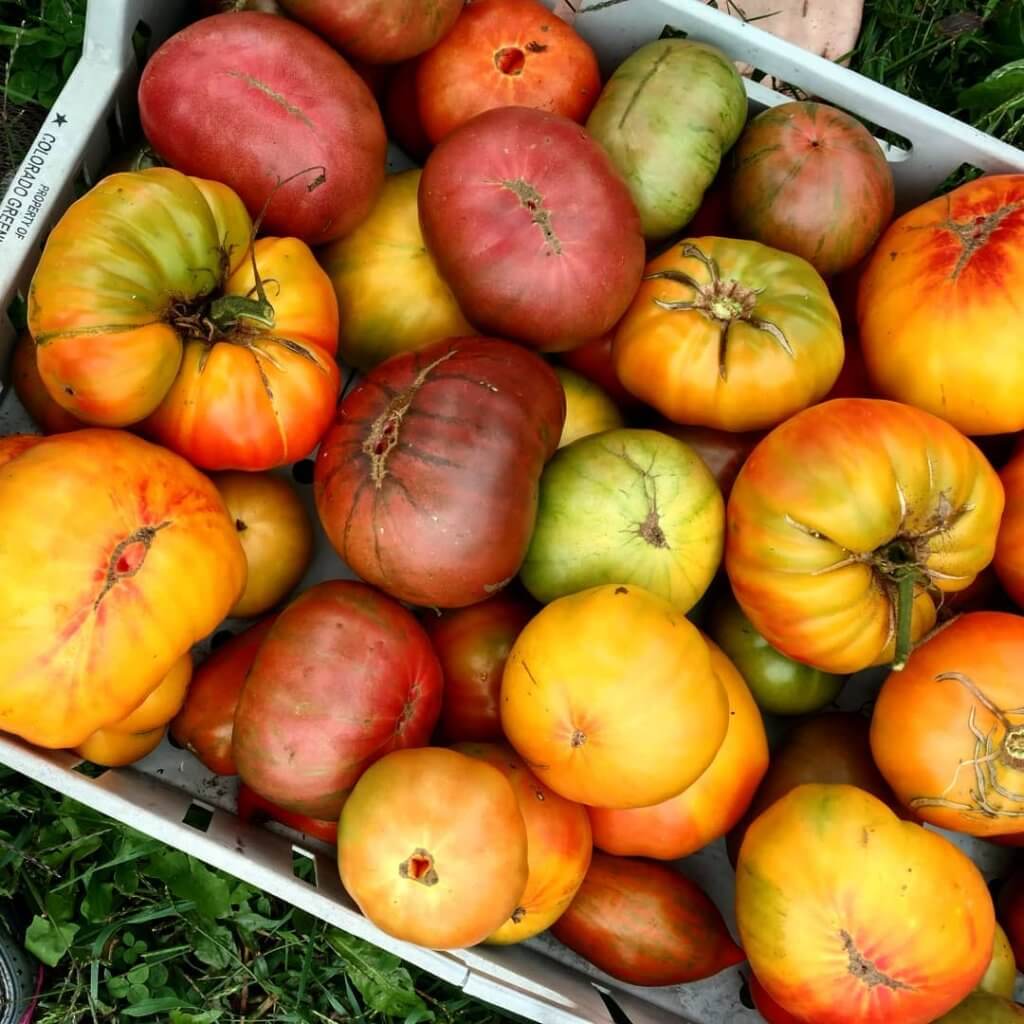
1. Milk cartons or buckets
The wind blows at our place all the livelong day, especially in the spring. And the fall. Sometimes, in the winter too. And don’t EVEN get me started on the summertime winds.
Your little tomato plants, though hopefully they are hardened off, will be a little tender the first few days that they are out in the sun and the wind. So a milk jug or bucket (my Dad, who always knows what he is doing, has a stack of 5-gallon buckets, with the bottoms removed, that he uses every summer), pushed down into the soil around the tomato plant will protect the wee plant from the wind, and will keep the soil around it from drying out so quickly.
I used old wooden shingles one year, when I had forgotten to collect the milk jugs. I just pushed them on the side of the prevailing summer winds (southern) of the tomato plant. Anything that will protect the little plant from the wind for the first few days, and won’t blow away itself, will work.
2. A goodly supply of compost
I make my own compost like this and I start the process the summer before I need it. But you can buy it by the bag, too, of course. Or if you’re lucky enough to have a place that makes compost close by and can order a load delivered, do that! I toss a scoop or two of compost into the planting hole, and I’ve never heard my tomato plants complain.
Living compost adds nutrients for a good long time, and it helps loosen up clay soil too.
I also spread a couple handfuls of compost around the tomato plant after I’ve planted it, as long as my compost supply holds out. Then every time it rains, guess what? The plant gets a little drink of compost tea. Yum, says the typical tomato plant. Somebody loves me very much! I shall reward the lover of me with a great many fruits!
yup. I do hear that often, you know.
3. A goodly supply of mulch.
I top dress the soil around the tomato plant with mulch as well, and I use whatever I have on hand. That might be wood chips, straw, hay, grass clippings, leaves, or (ideally) a combination of several of those. The mulch keeps the weeds down, and also preserves moisture in the soil.
4. Egg shells, crushed fine
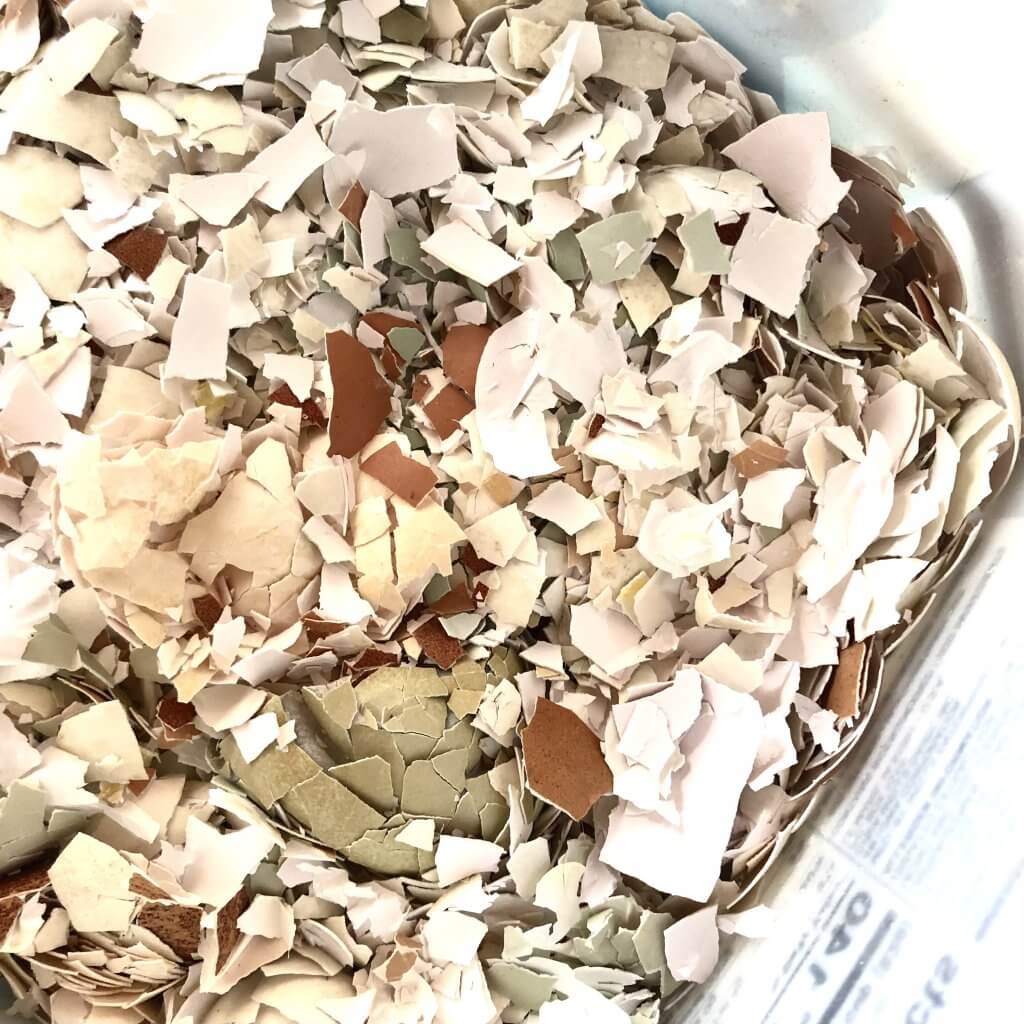
It takes me awhile to collect enough egg shells–months, actually. A professional tomato grower that I read once mentioned that tomato plants require great amounts of the nutrients that are in egg shells, including calcium carbonate, magnesium carbonate, and other trace minerals. My soil isn’t perfect for tomato plants, nutritionally-speaking, and–chances are–yours isn’t either. No offense.
Following his advice, I dig a bigger-than-necessary hole for my tomato plants. I then toss a handful of crushed egg shells into the hole, then a generous scoop of compost on top of that, and then finally I place my tomato plant on top of the compost. His theory was that the roots from the tomato plant grow down more deeply to get to the nutrients in the egg shells, resulting in a stronger, healthier tomato plant.
I’ve been adding eggshells to my planting regimen ever since, and my tomato plants always are so healthy and productive.
Coincidence? I think not!
5. Biodegradable plastic mulch
Tomato plants like warmth. If you prepare your garden bed where you tomato plants will go a few days before you intend to plant, and then cover it with plastic mulch film like this one, the soil warm up quicker, and your tomato plants might not go through the shock that they otherwise might. In any case, it won’t hurt!
6. A pile o’sticks
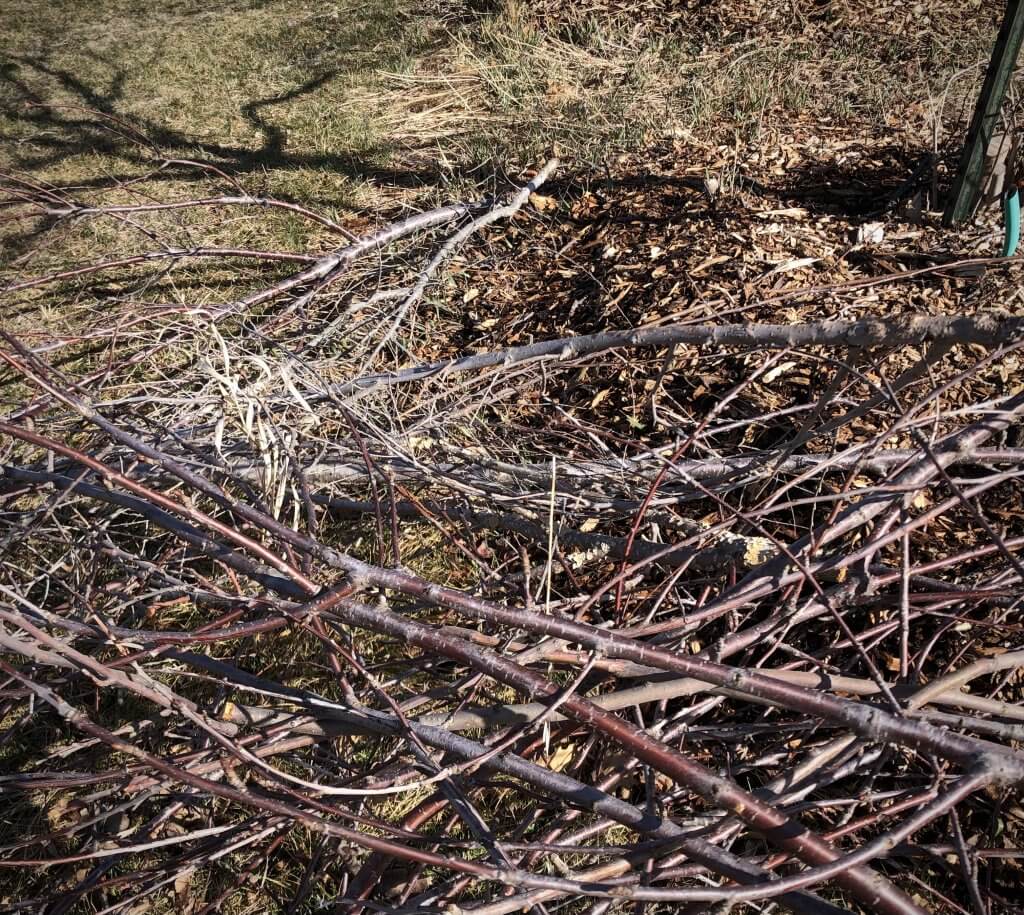
Not as big as the pile shown above, of course!
You’ll need one pencil-sized(ish) stick for each tomato plant that you intend to put into the ground.
If you have troubles with cutworms felling your small seedlings (this is a common problem with tomato seedlings), this is an easy pre-emptive fix. After you plant your tomato plant, slip a stick next to it, snug against the stem.
Since cutworms do their nefarious work by curling their disgusting little grub-like bodies around the stems of their innocent plant victims, supposedly when they snug themselves up against the tomato plant and feel that woody stick, they’ll abandon hope of cutting the tender seedling down.
One hopes that they would all just go and through themselves off a cliff. But probably not.
Are cutworms this clever? I don’t know. I just know that this super easy method seems to protect my seedlings from cutworms.
Pro tip: As you prune your fruit trees in the early spring, that’s a great time to clip the little sticks for your tomato-planting project.
7. Good-sized tomato cages
There are folks, I hear, who claim that their tomato vines don’t get 16′ tall. Mine do. Many heirlooms, or indeterminate varieties in general, will grow very tall vines. Unless you want to crawl around on the ground to pick your tomatoes, you’ll need some stout cages like these.
There are dozens of ways to stake up tomato plants. I’ve experimented with most of them. I have settled with these sturdy cages for many reasons, and among them:
- They are indestructible and last forever (as long as some enthusiastic hubs doesn’t run over them with his tractor, /cough/.)
- They don’t require constant fiddly tying up or securing of the tomato vine (like using stakes).
- Cages allow plenty of air flow and if you make them the way I make mine with the concrete reinforcing mesh, the openings are plenty big enough for you to pick even the biggest tomatoes. (Not true of many other types of fencing that I’ve seen formed into cages.)
- They are also very easy to store during the wintertime. I simply make pyramids of them next to our fence lines. They are almost invisible and are still there when I need them the next spring. Moreover: the songbirds love to roost in them! win/win
- They don’t blow over, when properly staked, even when heavy with tomatoes. (Check out my post on how to make these indestructible cages and how I anchor them against the wind, too.)
8. A batch of marigold and onion plants
I plant a marigold plant and an onion set or two with every tomato plant. The marigold attracts pollinators, which is always good, and both plants have a very pungent odor, which repel certain pests.
More links you might like
- Need an idea for how to use up a bunch of eggs quickly, to get a boost on your eggshell stash? Try these Swedish pancakes. This is my little Swedish grandma’s recipe; it couldn’t be simpler, and it (bonus) uses up a lot of eggs!
- I’ve written a bunch of posts about my favorite heirloom tomatoes to grow. Here’s one of them, and here’s another.
- This is how I make my tomato cages again. You only have to make them once. I believe they’ll outlive me! And, possibly, you as well.
Shop this post
- I can’t say enough good about these pruners. They work great to cut the sticks for your tomato-planting prep process.
- As long as we’re talking about pruning your orchard trees, you really ought to have one of these. I love mine so much, though mine is a different brand.
- And this power tool is what propelled me to finally appreciate my hubby’s affinity for powerful tools. I have always wanted to learn to use a chain saw, but so many people in my life advised against my having my own chain saw (Bryan(cough)Dad(cough)everybody else(cough) (siiiiigh). I finally bought this saw, however, and I’ve never looked back. It has a lot of power and prunes even thick branches but isn’t as scary as a chain saw for somebody small and not so strong (like me!).
Pin it for later, gator
Thanks for popping in to my little corner of the interwebs, gentle reader. If you’d like to learn more about growing tomatoes, please be sure to join my little community by dropping your email address into the little box up to the right. I am working on another post right now about the way I actually plant my tomato plants, and you’ll want to read that post before you start digging into your garden!
I promise never to spam you, double-pinky promise.
Take care and stay in touch!
*hugs*
- Day-old donuts: how to refresh & make them taste good as new!
- Quick and creamy salad dressing with lemon, garlic and ginger


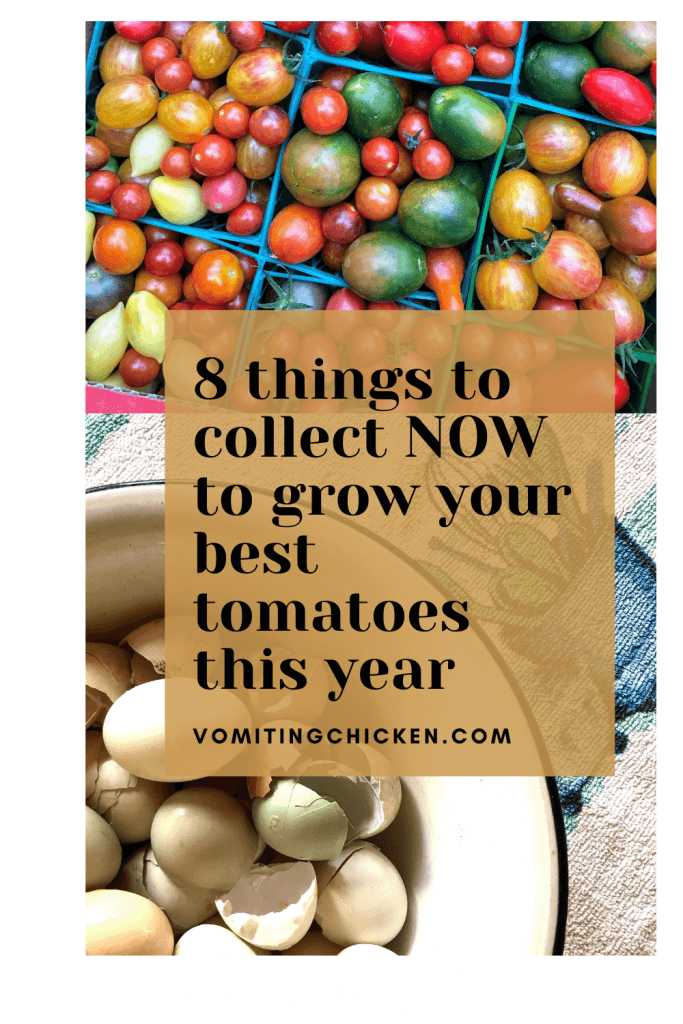
Excellent advice! For immediate tomato gratification I also add a spoonful of Epsom salts and a Tums-type tablet to each planting hole to feed them until the eggshells dissolve a bit. Once I carefully dug up a tomato plant to move it, and was amazed at the cluster of tiny feeder roots wrapped around the remains of a Tums. I’m too lazy to deal with 16′ plants, so I prune them to 6′. The tomatoes don’t seem to mind.
Janet, ugggh now I’m gonna have to add TUMS and epsom salts to my planting regimen. I’m very interested to hear about the tiny feeder roots going for that TUMS. Do you suppose it’s the calcium in the TUMS that attracts the roots? Also appreciate your insights about pruning. Do you have to continue pruning them all season, or does one good pruning do the job pretty well??
I’ve been seeing Tums for tomatoes also. Guess what will be in short supply now? LOL
I have 2 of your type of tomato cages. Tomatoes will grow as high as the cage, unless you lop them off to get all those greenies to ripen. Ask me how I know. 🙂
And yes to the milk containers except this year I don’t have any, anymore so I guess I better start saving something to shelter those babies. It has been a touch windy this year. *eye roll*
oh! Just a little breezy!! *echoing your eye roll* (so to speak)